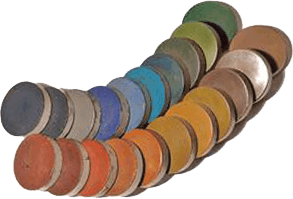Polished Concrete Contractors Face a Critical Year
 This is a critical year for polishing contractors to establish their identities.
This is a critical year for polishing contractors to establish their identities.
Outlasting the Growing Pains for Polished Concrete Contractors

Something old, something new, something borrowed, something blue.
For those of you not familiar with this saying, it has been part of the institution of marriage in England since before the 1600s. But why lay out an analogy between marriage and the polished concrete industry?
Very simply, both generally bring together four parties, and the degree of control over the outcome varies based on the part you play. The bride is the customer, the groom is the installer, the bride’s parents are the architect/specifier, and the groom’s parents are the general contractor.
The polished concrete industry, including both the mechanical and chemical steps, has been around for about 14 years, with RetroPlate 99 being a good benchmark, as the “99” stands for 1999. Having knowledge of your industry is an integral ingredient to writing your business plan, deciding on what niche or niches you wish to pursue, and making realistic projections for capitalization, personnel, and equipment needs.
Something old
Concrete has been around since the time of the Romans. Portland cement, which we are grinding, densifying, coloring, and polishing today, was first manufactured in England in 1824. It’s especially humbling to realize that it was more than 2000 years from the “first” cements of the Romans in 300 B.C. to the English creation of portland cement, and then 175 years before the concrete polishing industry was created.
We are still in our infancy and must take that into account when we feel that things are going slowly and that consumers, specifiers, and general contractors do not understand our product and us. How can we be impatient with our customers when we, ourselves, are still learning the strengths and weaknesses of our product, where it should be specified, and where it shouldn’t?
One truth that we have learned through trial and error and unpaid invoices is that polished concrete is neither bulletproof, nor maintenance-free, nor consistent in appearance. Think before you speak, and definitely before putting anything in writing, as embellishing your products and services not only harms you, but also the entire industry.
Something new
The polished concrete industry is still in its infancy compared to natural stone, carpet, linoleum, and other floor coverings. We are at a critical juncture as individual companies and as an industry. In 2013 we will continue to have growing pains. This can only be positive, as it means that the industry is not static, but spreading its wings and taking it to the competition’s doorstep.
As with any new industry, there is a tendency for all involved parties (both installers and manufacturers) to try to drive their own agendas. Such self-centered actions have the tendency to harm not only the industry, but also harm the company that is trying to “protect its own territory.”
Something borrowed

Grinding equipment – the floor preparation and natural stone industries.
Densifiers – started with reformulations of existing sealers and dustproofers.
Coloring agents – acid stains, integral colors, and dry shake hardeners.
All were previously being used with hard steel-troweled concrete. Today we must beg, borrow, and steal a new sense of professionalism, organization, and continuity. Imagine how good it will feel when the definition and specification of polished concrete has some teeth and no longer reminds us of the Tower of Babel.
Something blue
Normally we think of something blue as bad, but it doesn’t have to be. In Elizabethan times, something blue was positive. Open your eyes to the openings. Focus on replacing the millions of square feet of carpet, stone, and linoleum that are installed annually with polished concrete, and stop fixating on our fellow polishers. We should create our own good fortune.


0 comments